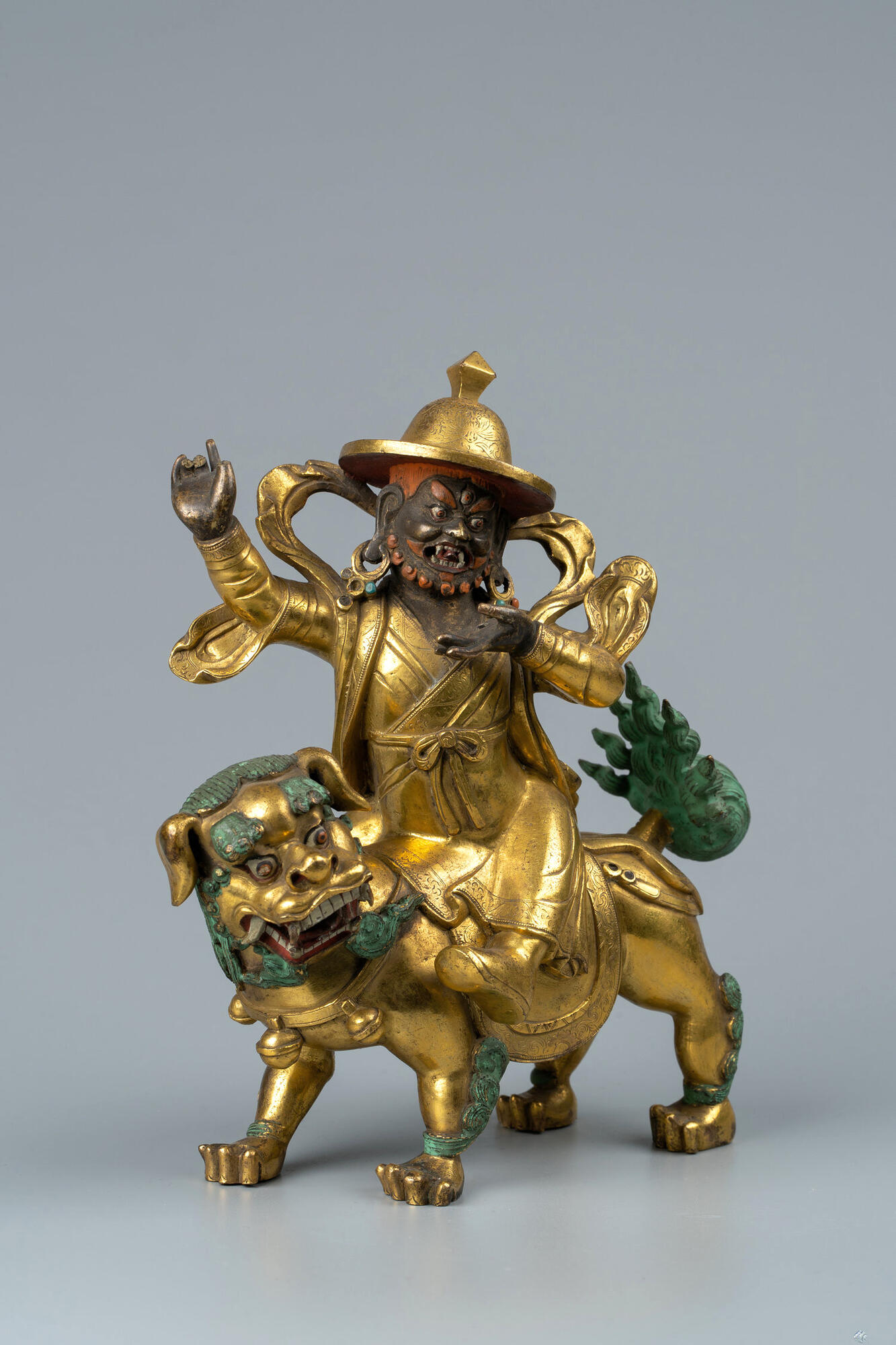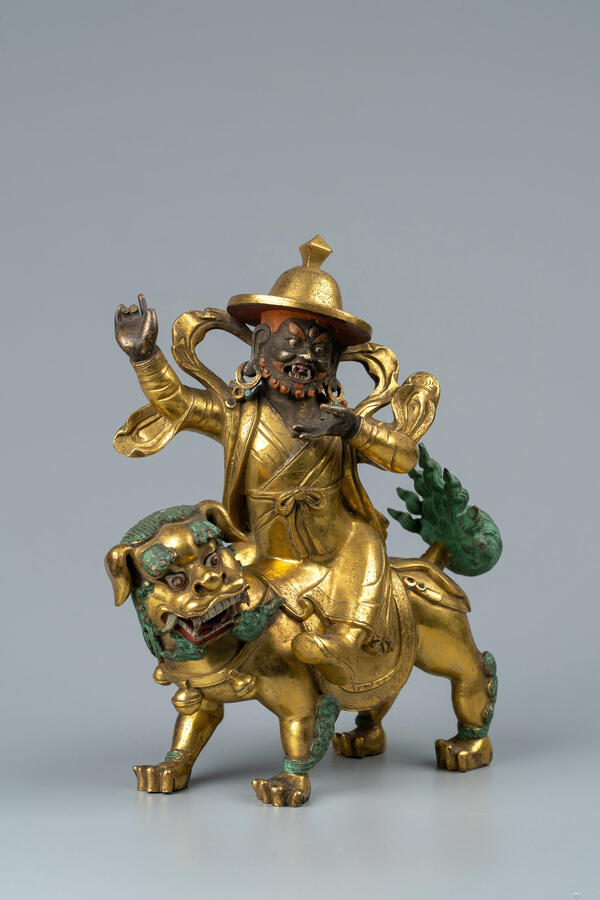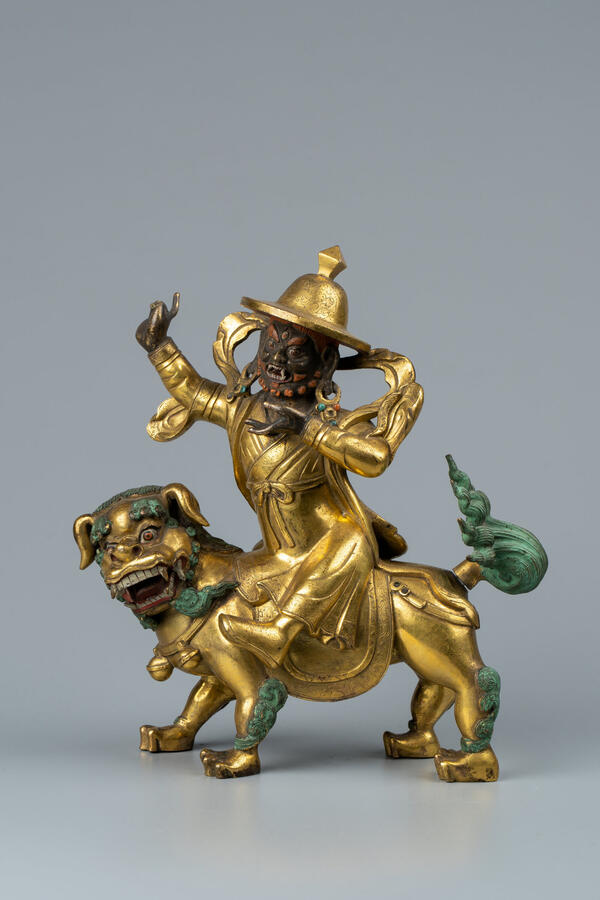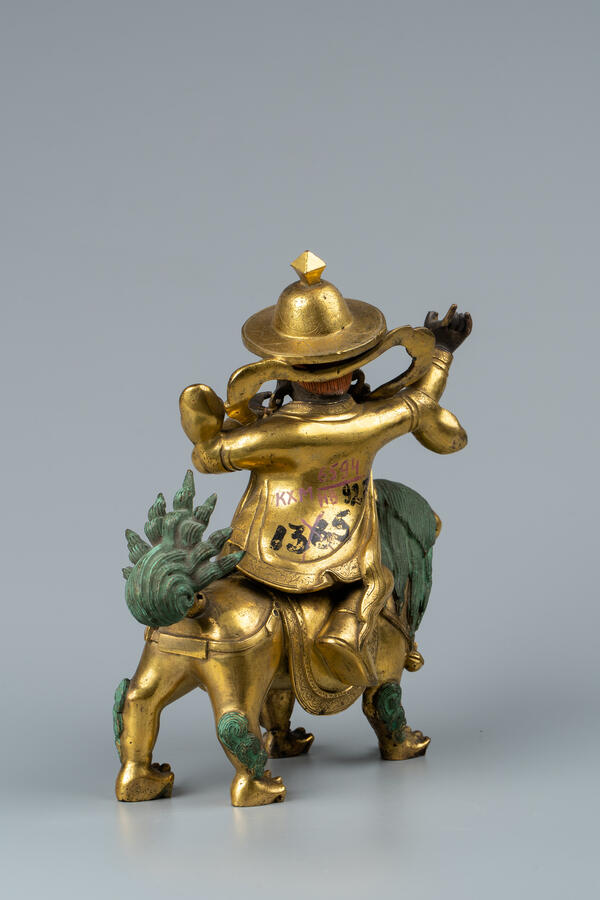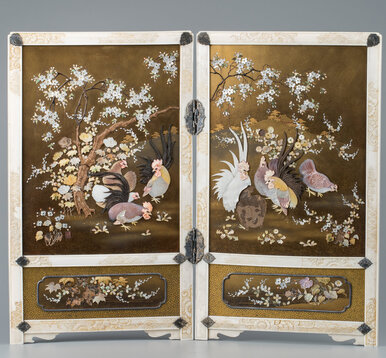The Samara Regional Art Museum displays Buddhist and Lamaist artworks. Previously, these exhibits were kept in the collection of the outstanding Russian orientalist Aleksei Pozdneev.
One of them is a figure of a Lamaist deity sitting on a lion in a hat. Most likely, this is a Dharmapala (“protector of dharma”) — a wrathful deity in Buddhist mythology, who protects the Religious Law and each individual Buddhist.
Presumably, this is a sculpture of Pehar, an ancient Tibetan deity and a Lamaist dharmapala. He enters the bodies of oracles and endows them with the gift of prophecy. According to the legend, Pehar was tamed and turned into the guardian of the Samye Monastery in Tibet. He was considered the mythological ancestor of Tibetan kings, as well as a celestial deity. There are different traditions of depicting Pehar. Sometimes he is depicted as a white-bodied horseman in a wide-brimmed hat riding a white lion with a green mane.
Lamaism is the latest branch of Buddhism. This term is never used by the Buddhists themselves, but it became a useful notion in European Buddhology, as it captures the main characteristic of this system of beliefs — the worship of the Lama (Teacher) as he is considered a Buddha himself.
Lamaism was formed in Tibet as a synthesis of Indian Buddhism of the Vajrayana school and traditional Tibetan teachings. Lamaism clashed with local shamanistic cults and with Bon, an ancient Tibetan religion. “Bon” means “to summon”, “to conjure”. Bon deities and spirits are included in the Buddhist pantheon as defenders of the faith.
This newest teaching also includes many provisions of the Bon religion, for example, the worship of the Lama is clearly connected with a traditional for the Bonpos (followers of Bon) identification of the priest and the god. The holy scripture of Lamaism — Lamrim (The Great Treatise on the Stages of the Path to Enlightenment) — contains a summary of Buddhism that has existed for two millennia. This scripture emphasizes the exceptional role of lamas in the salvation of Buddhism, and also defines their hierarchy. There are two highest ranks in the Lamaist hierarchy — the Dalai Lama (“Ocean Teacher”) and the Panchen Lama (“Great scholar”).
Lamaism began to spread in Mongolia in the 16th century, and in the 17th and 18th centuries it was brought into Russian territory — to Buryatia, Tuva and Kalmykia, where it exists to this day.
One of them is a figure of a Lamaist deity sitting on a lion in a hat. Most likely, this is a Dharmapala (“protector of dharma”) — a wrathful deity in Buddhist mythology, who protects the Religious Law and each individual Buddhist.
Presumably, this is a sculpture of Pehar, an ancient Tibetan deity and a Lamaist dharmapala. He enters the bodies of oracles and endows them with the gift of prophecy. According to the legend, Pehar was tamed and turned into the guardian of the Samye Monastery in Tibet. He was considered the mythological ancestor of Tibetan kings, as well as a celestial deity. There are different traditions of depicting Pehar. Sometimes he is depicted as a white-bodied horseman in a wide-brimmed hat riding a white lion with a green mane.
Lamaism is the latest branch of Buddhism. This term is never used by the Buddhists themselves, but it became a useful notion in European Buddhology, as it captures the main characteristic of this system of beliefs — the worship of the Lama (Teacher) as he is considered a Buddha himself.
Lamaism was formed in Tibet as a synthesis of Indian Buddhism of the Vajrayana school and traditional Tibetan teachings. Lamaism clashed with local shamanistic cults and with Bon, an ancient Tibetan religion. “Bon” means “to summon”, “to conjure”. Bon deities and spirits are included in the Buddhist pantheon as defenders of the faith.
This newest teaching also includes many provisions of the Bon religion, for example, the worship of the Lama is clearly connected with a traditional for the Bonpos (followers of Bon) identification of the priest and the god. The holy scripture of Lamaism — Lamrim (The Great Treatise on the Stages of the Path to Enlightenment) — contains a summary of Buddhism that has existed for two millennia. This scripture emphasizes the exceptional role of lamas in the salvation of Buddhism, and also defines their hierarchy. There are two highest ranks in the Lamaist hierarchy — the Dalai Lama (“Ocean Teacher”) and the Panchen Lama (“Great scholar”).
Lamaism began to spread in Mongolia in the 16th century, and in the 17th and 18th centuries it was brought into Russian territory — to Buryatia, Tuva and Kalmykia, where it exists to this day.
